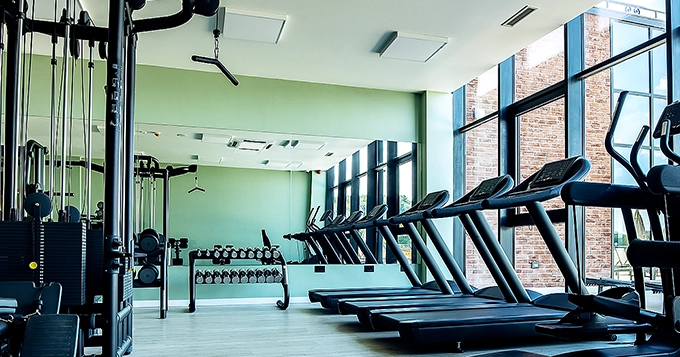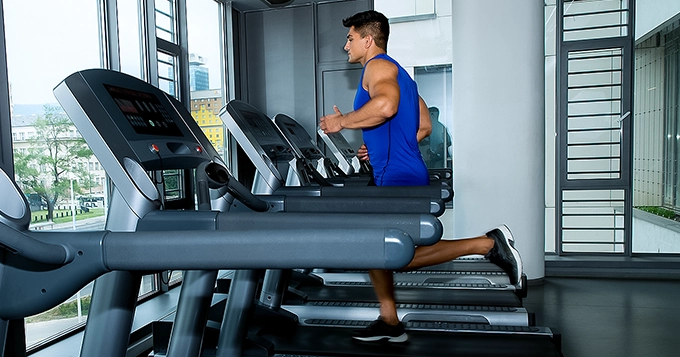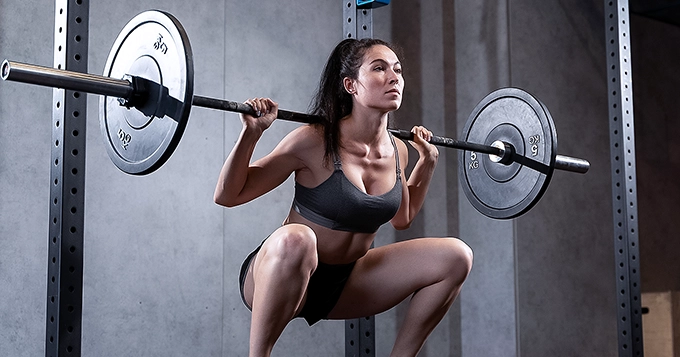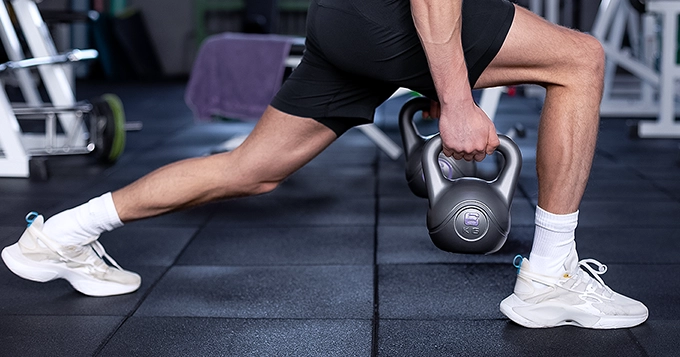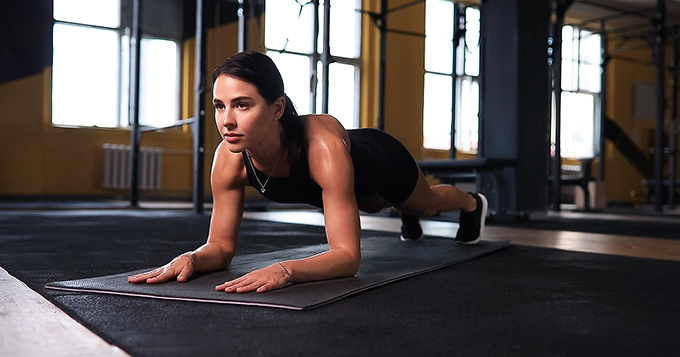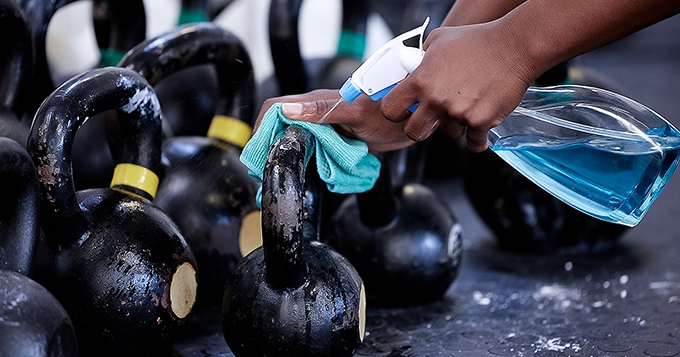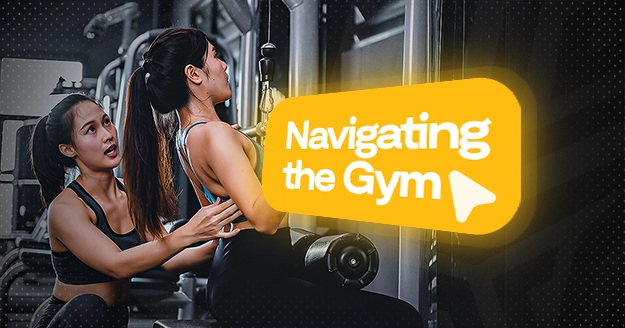One’s fitness journey sometimes begins with setting foot in a gym, where rows of different gym equipment stand ready to help you achieve your goals. However, navigating through the myriad of gym equipment can be daunting, especially for beginners.
Nothing to worry about! We made this comprehensive guide to walk you through an expanded list of different types of gym equipment, their functions, and how they can contribute to your workout routine. Once you get the hang of things, you’ll use them more frequently and incorporate them into your daily schedule without thinking twice.
-
Cardio Machines
A cardio machine, short for cardiovascular machine, is a piece of exercise equipment designed to help improve cardiovascular health and fitness by engaging in aerobic exercise.
These machines typically mimic activities such as running, walking, cycling, or rowing. They offer a controlled environment for users to engage in cardiovascular workouts, allowing you to adjust parameters like speed, resistance, and incline to tailor your exercise routine to your fitness level and goals.
Types of gym equipment for cardio include:
- Treadmill: Mimics walk or run indoors, allowing you to control speed and incline.
- Stationary Bike: Provides low-impact cycling, great for those with joint issues.
- Elliptical Trainer: Combines movements of running, cycling, and stair climbing, offering a full-body workout with minimal impact.
- Rowing Machine: Simulates the action of rowing a boat, engaging the upper and lower body while providing an excellent cardiovascular workout.
- Stair Climber: Mimics the motion of climbing stairs, challenging leg muscles and increasing heart rate for an effective workout.
-
Strength Training Equipment
Strength training equipment refers to various tools and machines specifically designed for resistance-based exercises to build muscle mass, enhance metabolism, and improve overall strength. These types of workout equipment provide resistance against the muscles, challenging them to work harder and grow stronger over time.
Here are some key pieces of strength training equipment:
- Free Weights (Dumbbells, Barbells): Versatile tools for targeting specific muscle groups and improving functional strength.
- Weight Machines: Guided equipment designed for isolating muscles and providing support for beginners.
- Resistance Bands: Portable and adaptable tools that add resistance to bodyweight exercises or traditional weightlifting movements.
- Smith Machine: Provides guided vertical movement for various strength exercises, offering stability and safety during lifts.
- Cable Machines: Allow for a wide range of resistance exercises targeting specific muscle groups through adjustable pulleys and attachments.
-
Functional Training Equipment
Functional training equipment refers to a category of exercise tools and accessories designed to facilitate functional movement patterns and improve overall strength, stability, mobility, and coordination.
Unlike traditional weight machines that often isolate specific muscles, functional training equipment focuses on movements that mimic activities of daily living and engage multiple muscle groups simultaneously. Here are some examples of functional training equipment:
- Kettlebells: Versatile weights used for dynamic movements like swings, presses, and squats.
- Medicine Balls: Weighted balls utilized for core exercises, throws, and explosive movements.
- TRX Suspension Trainer: Suspended straps that leverage bodyweight for resistance training, targeting multiple muscle groups simultaneously.
- Plyometric Boxes: Platforms used for explosive jumping exercises, improving power and agility.
- Battle Ropes: Heavy ropes for dynamic strength and conditioning exercises, engaging the upper body and core.
-
Flexibility and Mobility Equipment
Flexibility and mobility equipment refers to tools and accessories designed to enhance the range of motion, joint flexibility, muscle elasticity, and overall mobility. These equipment pieces are commonly used in various settings, including fitness facilities, rehabilitation centers, sports training facilities, and home gyms, to improve flexibility and mobility for better performance, injury prevention, and overall well-being. Types of gym equipment for flexibility and mobility include:
- Foam Rollers: Used for self-myofascial release to alleviate muscle tightness and improve range of motion.
- Yoga Mats: Provides cushioning and grip for yoga, Pilates, stretching, and bodyweight exercises
- Foam Blocks: Aids in achieving proper alignment and support during yoga and stretching poses.
- Massage Balls: Small balls used for targeted muscle release and trigger point therapy.
- Stretching Bands: Assistive tools for improving flexibility and enhancing stretching exercises.
General Gym Equipment Etiquette
General gym equipment etiquette involves respecting the space, equipment, and other gym-goers to ensure a positive and safe workout environment. Here are some key points:
- Cleanliness
Wipe down gym equipment before and after use with provided disinfectant wipes or sprays to maintain hygiene and prevent the spread of germs.
- Sharing
Be mindful of others waiting to use a gym equipment. Limit your time on gym machines during peak hours and allow other gym-goers to work in between your sets.
Avoid leaving personal items like towels and water bottles on the machine to reserve them when you’re not actively using them. Another gym member might be waiting to utilize the same equipment to complete their workout regimen.
- Re-racking Weights
This is likely a top annoyance for frequent gym attendees. It’s highly frustrating to encounter scattered dumbbells or to find the squat rack cluttered when you need them.
Always re-rack weights and return equipment to its designated place after use. This helps prevent accidents and keeps the gym tidy for others.
- Personal Space
Respect others’ personal space while working out. When someone is exercising in your vicinity, it’s important to respect their space and allow them to work out without obstruction or concern about collisions. Give people enough room to move freely, and avoid placing personal belongings on equipment you’re not using.
If you need to pass by them, make sure to give them ample space and maneuver around them to avoid disrupting their workout routine.
- Courtesy
Be polite and considerate to fellow gym-goers. Avoid loud conversations, unnecessary noise, or disruptive behavior that may disturb others.
- Safety
Use equipment properly and follow instructions for correct form and technique to avoid injury. If you’re unsure about how to use a particular machine, ask a staff member for assistance.
- Phone Use
Limit phone usage while using equipment to avoid distractions and allow others to access the equipment. If you need to take a call or send a text, step away from the equipment.
- Hygiene
Practice good hygiene by wearing clean workout attire and using deodorant. Avoid wearing strong colognes or perfumes that may bother others.
- Carry a cloth to clean the equipment after you use them.
To ensure the convenience of fellow gym-goers, it is kindly requested that you bring a towel when visiting the gym. It is important to consider the discomfort of others who may need to use equipment after you, and wiping down machines after your workout demonstrates respect towards fellow patrons.
- Spotting
Offer to spot someone if they’re lifting heavy weights, and ask for a spotter if you need one. Spotting helps ensure safety during challenging lifts.
- Respect Staff
Follow any rules or instructions provided by gym staff. They are implemented to help maintain a safe and enjoyable environment for all gym members.
- Take note of the ‘house rules’
Each gym typically establishes its own guidelines regarding proper conduct within the facility. Upon entering the gym, these rules are often prominently displayed to promote the well-being and safety of all patrons. Common regulations may encompass prohibitions on taking selfies to safeguard the privacy of individuals.
Conclusion
Navigating through the wide array of gym equipment can be overwhelming, but understanding their functions and benefits is crucial for crafting an effective workout routine tailored to your goals. Whether you prefer cardio, strength training, functional workouts, or flexibility exercises, there’s equipment available to suit your needs and preferences
